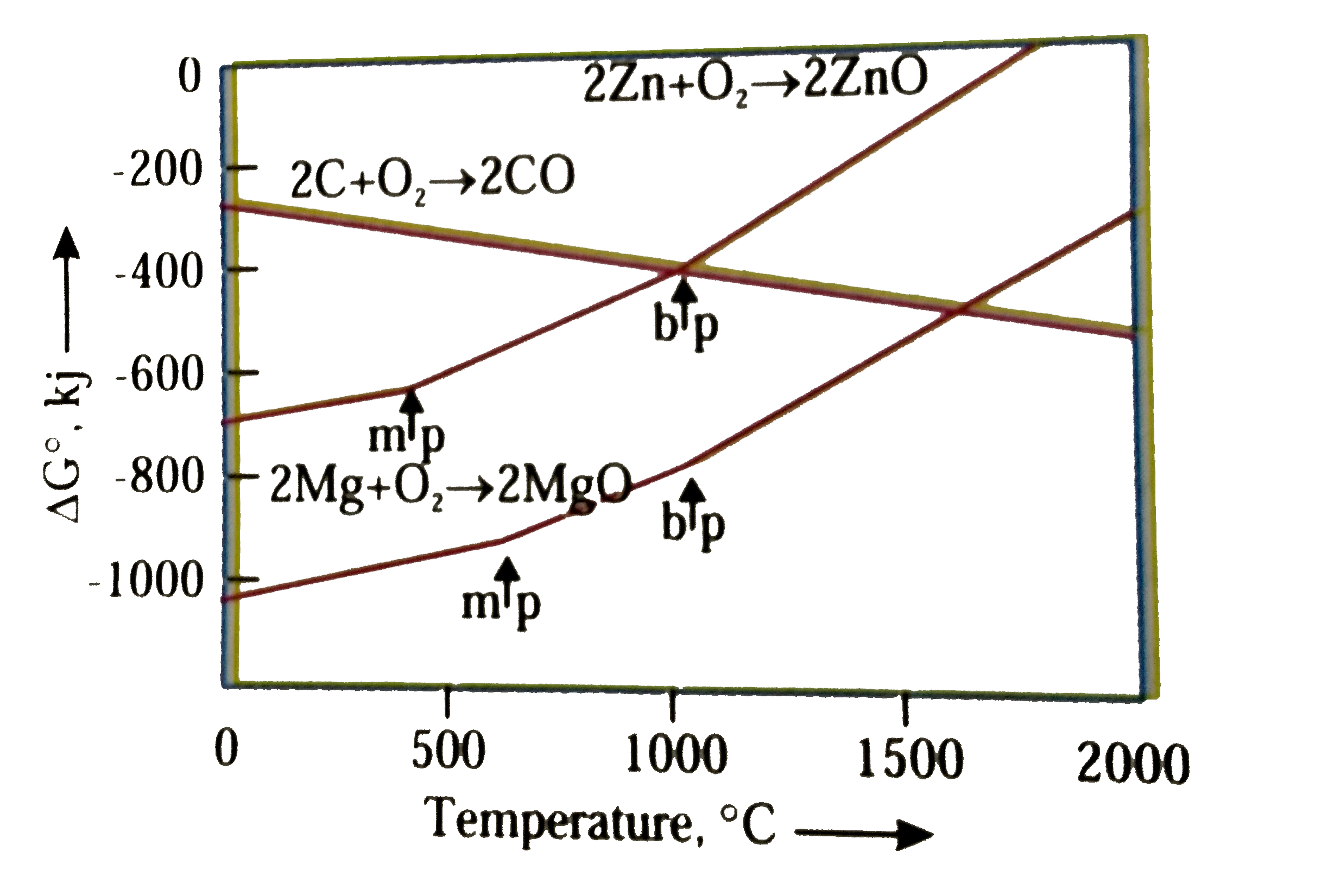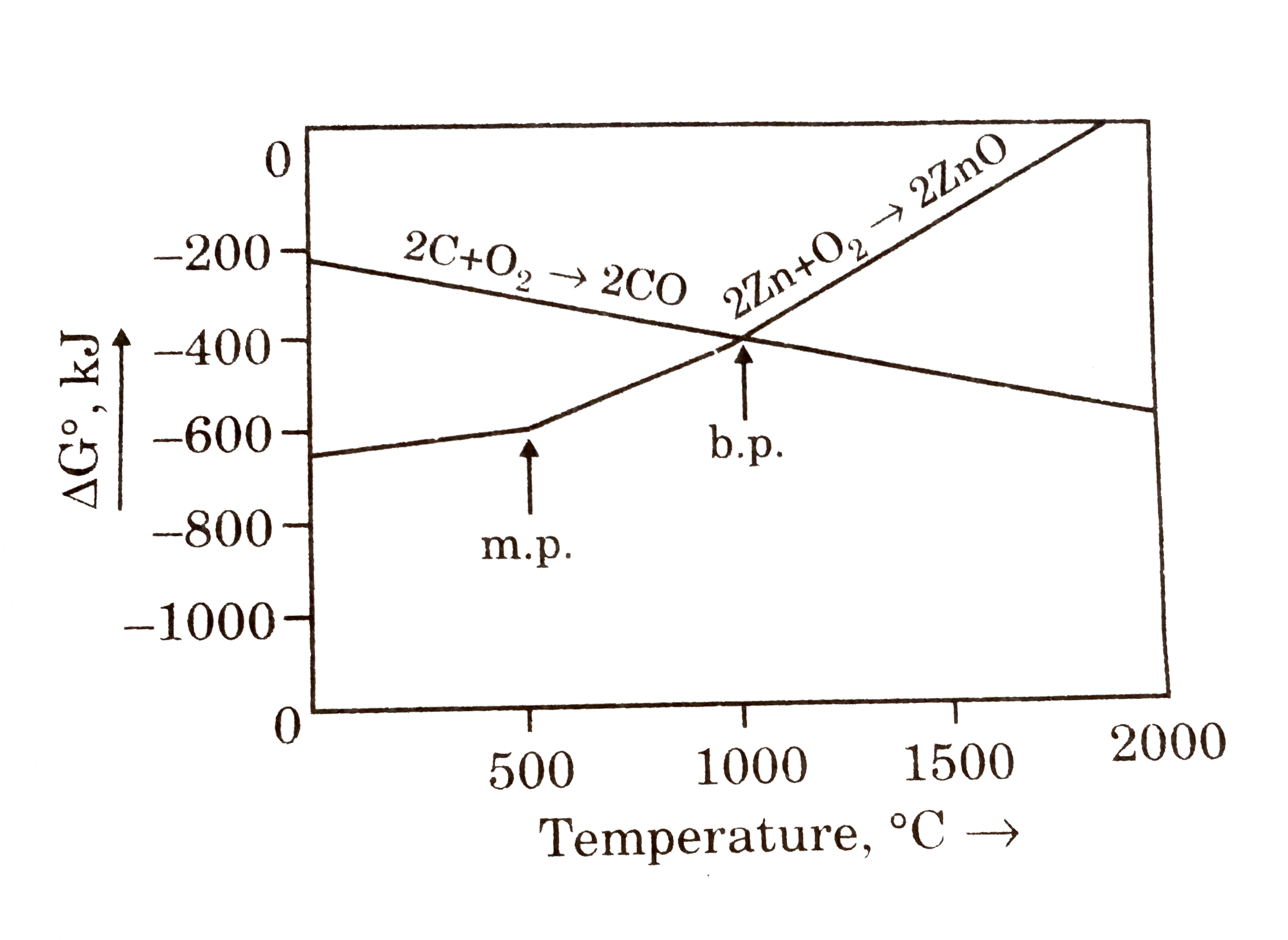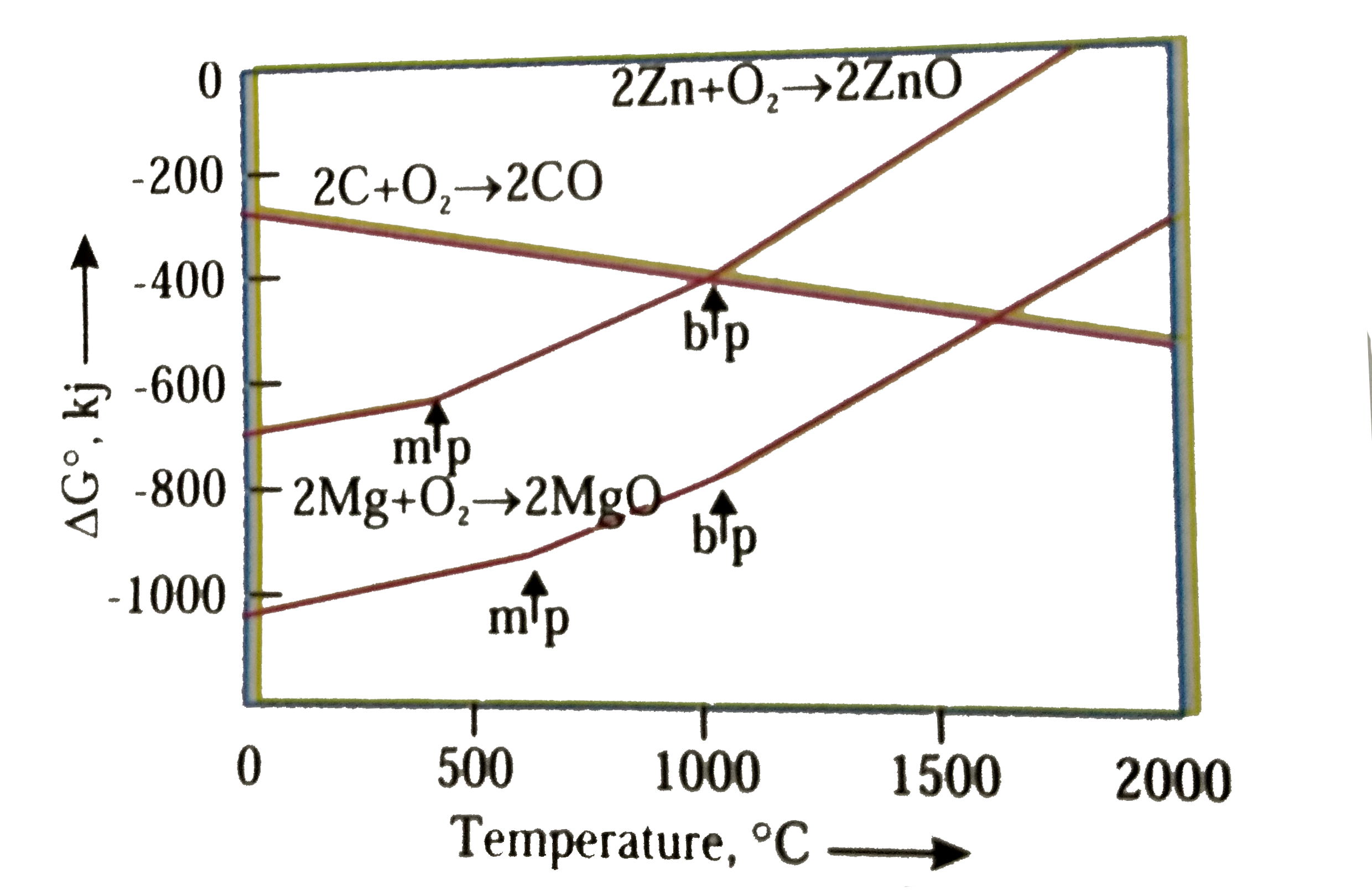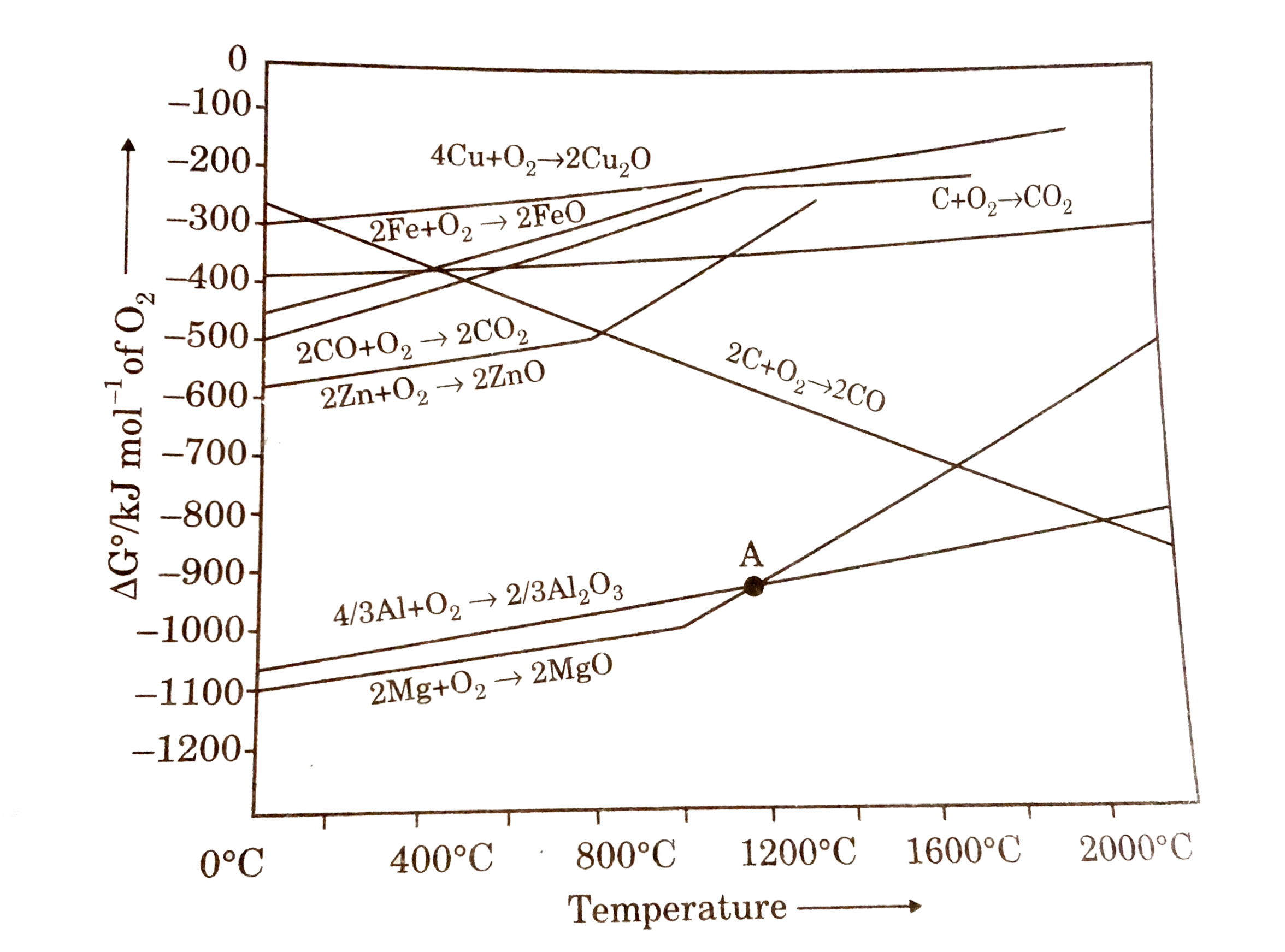
The points noted by arrows are melting and boiling points of the metal zinc and magnasium. ΔG0 as a function of temperature for some reaction of extractive metallurgy.
At what approximate temprature, zinc and carbon have equal affinity for oxygen?
1000∘C
1500∘C
500∘C
1200∘C
The correct Answer is:b
Topper's Solved these Questions
- METTALURGYBOOK - NARAYNACHAPTER - METTALURGYEXERCISE - Passage-III
2 Videos
- METTALURGYBOOK - NARAYNACHAPTER - METTALURGYEXERCISE - Passage-IV
2 Videos
- METTALURGYBOOK - NARAYNACHAPTER - METTALURGYEXERCISE - Comprehension type question Passage-I
2 Videos
- METALLURGYBOOK - NARAYNACHAPTER - METALLURGYEXERCISE - STATEMENT TYPE QUESTOINS
20 Videos
- NUCLEAR CHEMISTRYBOOK - NARAYNACHAPTER - NUCLEAR CHEMISTRYEXERCISE - INTEGER
28 Videos
Similar Questions
Questions given below are based on the given diagram for extractive metallurgy.
(i) At what approximate temperature, zinc and carbon have equal affinity for oxygen ?
View SolutionQuestion given below are based on the given diagram of extractive metallurgy.

The point noted by arrow are the melting and boiling points of the metals zinc and magnesium. ΔG∘ as a function of temperature for some reaction of extractive metallurgy.
At this temperature ΔG∘ of the reaction is:
ZnO+C→Zn+CO
View Solution
Knowledge Check
Question given below are based on the given diagram of extractive metallurgy.

The point noted by arrow are the melting and boiling points of the metals zinc and magnesium. ΔG∘ as a function of temperature for some reaction of extractive metallurgy.
At what temperature, zinc and carbon have equal affinity for oxygen?A1000∘CB1500∘CC500∘CD1200∘C
The points noted by arrows are melting and boiling points of the metal zinc and magnasium. ΔG0 as a function of temperature for some reaction of extractive metallurgy.
At 1000∘C, which reaction is spontaneous to a maximum extentAMgO+C→Mg+COBZnO+C→Zn+COCMgO+Zn→Mg+ZnODZnO+Mg→Zn+MgO
The points noted by arrows are melting and boiling points of the metal zinc and magnasium. ΔG0 as a function of temperature for some reaction of extractive metallurgy.
At 1000∘C, which reaction is spontaneous to a maximum extentAMgO+C→Mg+COBZnO+C→Zn+COCMgO+Zn→Mg+ZnODZnO+Mg→Zn+MgO
Question given below are based on the given diagram of extractive metallurgy.

The point noted by arrow are the melting and boiling points of the metals zinc and magnesium. ΔG∘ as a function of temperature for some reaction of extractive metallurgy.
To make the following reduction process spontaneous, temperature should be:
ZnO+C→Zn+CO
View SolutionQuestion given below are based on the given diagram of extractive metallurgy.

The point noted by arrow are the melting and boiling points of the metals zinc and magnesium. ΔG∘ as a function of temperature for some reaction of extractive metallurgy.
To make the following reduction process spontaneous, temperature should be:
ZnO+C→Zn+CO
View SolutionQuestion given below are based on the given diagram of extractive metallurgy.

The point noted by arrow are the melting and boiling points of the metals zinc and magnesium. ΔG∘ as a function of temperature for some reaction of extractive metallurgy.
To make the following reduction process spontaneous, temperature should be:
ZnO+C→Zn+CO
View SolutionQuestions given below are based on the given diagram for extractive metallurgy.
(i) At what approximate temperature, zinc and carbon have equal affinity for oxygen ?
View SolutionRead the following graph and answer the following question

At what approximately temperature, zinc and carbon have affinity for oxygen?
View Solution
